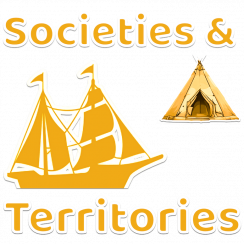The three sisters
The Iroquoians got most of their food from farming corn, squash and beans. By planting them together in the same field, these three plants can help each other grow. For example, the beans use the corn stalks for climbing and the corn leaves protect the squash from the wind and sun. These three products are called the three sisters. The relief and climate of the territory, with its plains, made it good for farming.
Daily corn
The women made all the meals. Corn was the staple of daily meals. For example, corn porridge was sometimes served with meat, fish or squash (called “sagamite” by the Europeans; each Iroquoian nation had a different name for it). Women also made cornbread shaped into small cakes, which they cooked in hot ashes. The corn was ground with a wood mortar and pestle.
Bountiful nature
To spice up and add variety to their corn-based diet, the Iroquoians took advantage of nature’s bountiful gifts all around them. In the spring, there was maple sap, young ferns and wild garlic. In the summer, there were berries such as strawberries, blueberries, raspberries, blackberries, gooseberries and cranberries. In the fall, there were nuts. The Iroquoians saved some of these harvests for the winter. Fruits were dried so they could be stored.
Fish and meat to complete the diet
Fish was often served with corn porridge. So was meat like wild turkey (now extinct), partridge, and passenger pigeon (now extinct). Fish and meat were smoked, boiled, cooked or dried.
Author: Service national du Récit de l’univers social
Take it to another level!
To learn more about this period, read through the Student Notebook of our SMARTBoard tools for the Iroquois here
The concepts below are used in our Card Game called Connect the Facts Game!
And there is even an i-Spy game is also being developed for the Iroquois society here!
Important concepts and big ideas:
[glossary slug=’divisionoflabour’]
[glossary slug=’resources’]
[glossary slug=’richinresources’]
[glossary slug=’threesisters’]
[glossary slug=’sedentary’]



